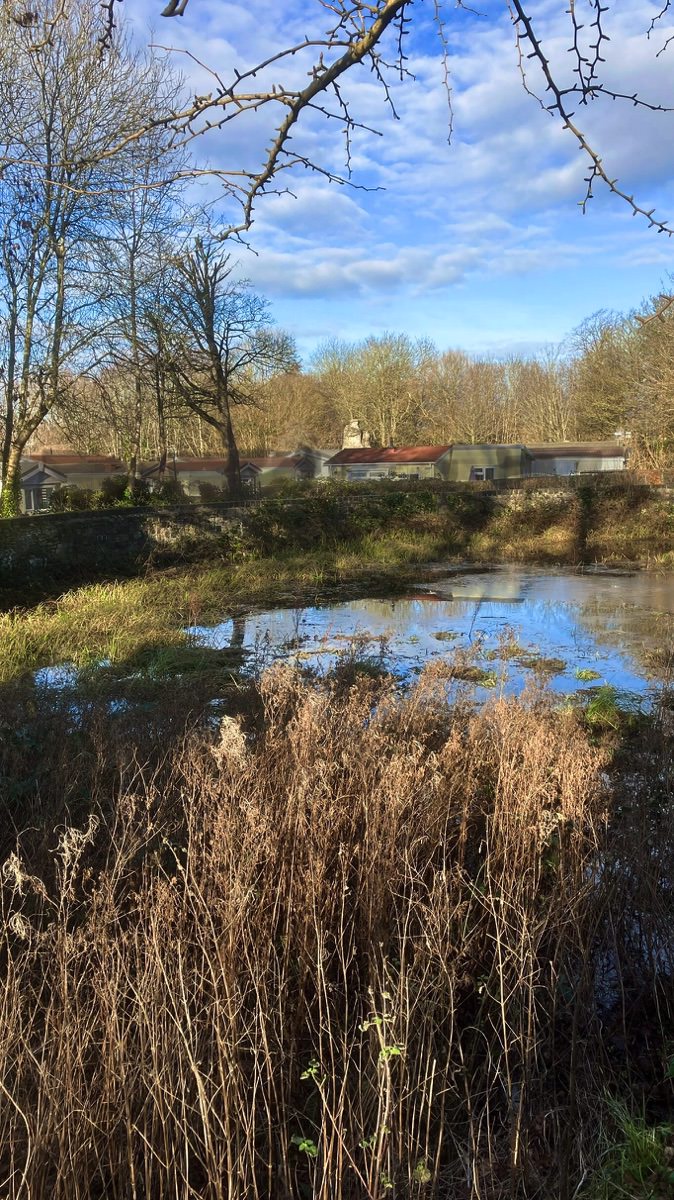William Champions Gardens will sustain a rich heritage experience for the wider community, offering opportunities for relaxation and education in an ecologically diverse setting.
Vision Statement for The Friends of William Champion’s Garden
To establish a friends group to both conserve and maintain the unique 18th century garden and to open it up to all as a recreational and educational green space.
The Aims of The Friends Group
- To conserve and sustain this unique historic Garden and its Heritage Assets for future generations
- To maintain and revive the landscape
- To encourage and protect the Biodiversity of the site
- To make the Garden accessible to all where the local and wider community can both participate and take pleasure in it
- To provide an educational and recreational platform for the community
The Objectives of The Friends Group
In order to achieve our aims we will:
1. Conserve & Sustain:
- Carry out the repair and conservation of all the Heritage Assets
- Survey and assess each Heritage Asset and prepare a programme of repair and conservation
- Appoint conservation professionals to both carry out work
- Organise workshops for the community to be trained by the professionals in various skills, working alongside them e.g. stone conservation, lime mortar work
2. Maintain & Revive
- Carry out the maintenance of the trees and vegetation
- Creating community events: e.g. Green Gyms, bulb planting, hedge laying
- Create appropriate and accessible paths and walkways
- Provide appropriate, well signed access, together with fencing and gateways
- Survey all the trees and plants and identify their age and significance
3. Add Biodiversity
- Identify both the wildlife and plants in the Garden
- Create areas for wildlife e.g. a wildflower meadow and log piles for hibernating animals, bug hotels, bat and bird boxes etc.
- Create wildlife trails connecting the Garden via the Elm Walk to the woodland beyond the Statue of Neptune
4. Make the Garden Accessible
- Create appropriate, well signed entrances to the Garden in order to generate public awareness
- Attract both the local and wider community with volunteers to help maintain it
- Address access for people with very young children and for people with mobility issues and provide well maintained and easily navigated pathways for all
- Remove existing unsightly and inappropriate signage and fencing and create hedging or more attractive and appropriate fencing along some of the boundaries
- Provide accessible links to the Garden from the Museum, Clock Tower and from the Council Car Park
- Provide appropriate, simple seating
5. Focus on Education & Recreation
- Carry out conservation workshops for all e.g. stone repair, lime mortar, dry stone walling
- Carry out nature trails and educational events for all e.g. bat and bird walks, tree trails, making bat and bird boxes, bug hotels etc.
- Encourage the local community to use the Green Space for exercise e.g. Green Gym, Tai Chi, Circuit Training, Parents with Strollers
- Encourage local schools and groups to use the space for educational trips e.g. Heritage and nature trails and making bat and bird boxes, bug hotels etc. using the Museum workshop facilities
- Create tree identification trails, bat watch evenings in summer, early morning chorus walk etc.

Our Five Year Programme
Phase I
Having created an appropriate and accessible entrance to the Garden, volunteers, with the guidance and support of various South Gloucestershire Officers e.g. Conservation & Landscape Officers, will set up a programme to clear the encroaching vegetation and trees. Once cleared, a proper survey of the standing structures can be carried out to assess damage and conservation needs. Fundraising will be carried out in order to engage professionals to carry out the conservation. It is envisaged that they will concurrently carry out on the job skill training workshops for the local and wider community.
Phase II
Engage a landscape historian, possibly already a volunteer, to understand how the original gardens were laid out and together with the local community plan a new garden landscape for all. This will involve creating various areas of garden, including a wild flower meadow with mown paths and encourage wildlife, with nature trails, bug houses, beehives, log piles for insects, plants for butterflies, bat boxes, pond dipping etc.
Phase III
Liaise with the Community and Community groups e.g. theatre group, garden group, local history, youth group, nursery, senior citizens, parents/grandparents and toddlers to create a programme of activities and establish appropriate areas for some of these activities. Open the space as a teaching aid for students in heritage, conservation, history, archaeology, garden and landscape design etc. and involving them in the conservation, design and restoration.
